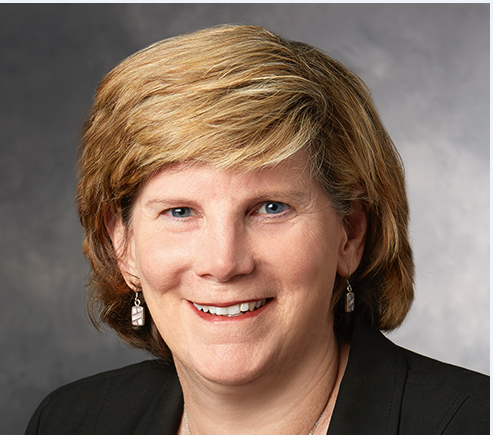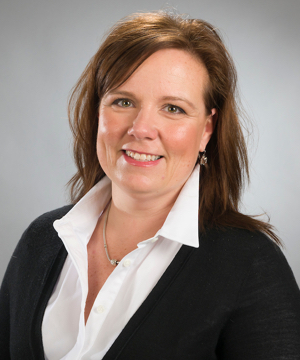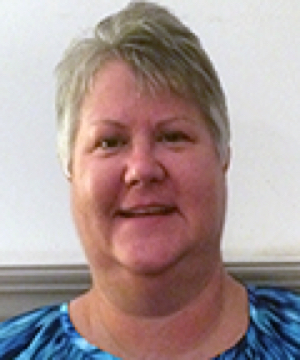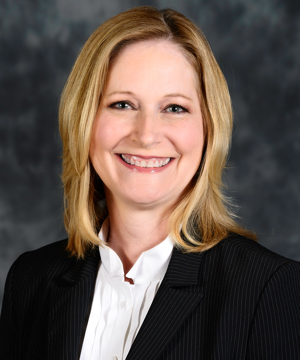2018 Care Coordination and Discharge Planning Summit Agenda
** This Event Has Been Approved for 8.0 Physician CME, 8.0 Contact Hours for Nurses and 15 CE Contact Hours for Case Managers **
Agenda
Day One, May 10, 2018
7:15am – 8:00am
Conference Registration & Networking Breakfast
8:00am – 8:15am
Chairperson’s Remarks
8:15am – 9:00am
Keynote: 21st Century Care Management Across the Continuum of Care
Effective discharge planning is a vital element in the continuum of services referred to as care management. The scope of care management has evolved as providers have adapted to new payment models (from pay-to-performance to risk life agreements) that include increasing levels of risk. These models are based on a value equation that initiated with quality and cost, but has expanded to include episodes of care and longitudinal care management. Now accountable for the full scope of care delivery, from the inpatient setting to post-acute care and ambulatory services, health systems are focused on identifying key strategies, effective programs and new tools to optimize discharge planning and transitions of care. Value, now driven by integration and coordination of services over time, is enhanced by a series of tools, including health information systems, information technology and data analytics. These systems and tools will be highlighted to illustrate the importance of discharge planning as an element of longitudinal care management in our evolving health care environment.
 |
9:00am – 9:45am
Leveraging Technology to Improve Patient Flow and Discharge Planning Decision Making
Automating the process of placing patients across a hospital or health system can reduce patient wait times and overcrowding, in addition to improving a hospital’s financial performance. Care coordination and communication can now be seamless as patients move step by step through the care continuum despite multiple handoffs and disparate IT systems. The use of technology can also connect the hospital and post-acute care facilities involved in a patient’s care.
It is imperative for hospitals to enhance risk mitigation strategies especially as value-based payments continue to impact reimbursements. Finally, enabling technology provides organizations the opportunity to precisely pinpoint which patients have the greatest likelihood for readmission and follow-up with more intense observation, monitoring and high-touch interactions. This session will discuss the various ways to implement technology to improve a hospital’s overall workflow and ensure successful care transition.
9:45am – 10:15am
Morning Networking & Refreshments Break
10:15am – 11:00am
How Optimizing Front-End Emergency Department Patient Flow Can Enhance Patient Care & Satisfaction
Similar to many Emergency Departments in the country, Stanford Health Care experiences overcrowding in the ED due to limited capacity and boarding of inpatients. During the past several years, SHC has put in place several initiatives to improve patient flow in the ED and mitigate overcrowding. We will discuss the implementation and results of those efforts in the context of continued rising patient volume.
 |
Interim Chair Emergency Medicine |
 |
Patrice Callagy, RN, MPA, MSN, CEN |
11:00am – 11:45am
Improving Patient Throughput by Leveraging System Wide Capacity Management
The Hartford HealthCare Care Logistics Center controls the flow of patients across the system’s five acute care hospitals from one centralized location while ensuring a more even distribution of patients throughout the network. By collocating RNs, Environment Services and Transport staff from all the hospitals, the CLC staff is able to communicate with one another in real time to make quick and appropriate patient throughput decisions for 1800 beds. Centralizing the logistics functions has allowed staff to identify inefficiencies and create standardized processes, which has reduced wait times system wide and boosted revenues across the network of community hospitals. We will discuss our implementation as well as how Epic technology and lean management tools have helped us to achieve our results.
 |
11:45am – 12:45pm
Lunch
12:45pm – 1:30pm
Using Data, Quality Metrics and Performance Improvement Tools to Leverage Empirical Outcomes in the ED
In a fast- paced, high stress Emergency Department, it is inevitable that nurses, physicians and ancillary personnel play a crucial role in figuring out ways to solve the patient challenges in patient flow. Healthcare organizations are embracing data analytics to improve and facilitate efficient, safe and quality-centric patient care.
Although, institutions are becoming more and more data driven, not every staff member is well-versed in data and quality tools. Also, an integral question that needs to be answered is, how important are data metrics and how should emergency departments utilize data to facilitate changes.
More importantly, healthcare leaders must know how to communicate these data metrics and data-driven insights to clinical teams in order for them to drive best practice in the workplace. This workshop will dive into the tools used, and how to creatively communicate data to staff.
- Discuss ED metrics and how it relates to length of stay, transfers, admissions and CMS reportable measures.
- Examine merits and opportunities for different data sources such as surveys, feedback from staff, observational audits and EHR
- Leverage internal and external performance data and benchmarking metrics
- Utilization of quality and technological tools to capture, analyze and communicate results
 |
1:30pm – 2:15pm
Using Telehealth in the Emergency Room to Ease Crowding and Enhance Care
A review of the psychiatric emergency consultation programs across the country demonstrate a wide array of program types, purposes and models; however, most are focused on a range of primary objectives: easing crowding, reducing costs and improving outcomes for those patients who have a condition that requires the beginning of their treatment in the emergency room.
We will discuss why hospitals are interested in the model, key aspects of initiating, funding and evaluating a program and why they are key to improving clinical and operational efficiencies and how this is measured through the hospital system’s bottom line and key performance indicators - ED length of stay, percentages of disposition/discharge, patient and provider satisfaction and hospital system charges.
 |
2:15pm – 2:45pm
Afternoon Networking & Refreshments Break
2:45pm – 3:45pm
Panel: Successful Care Coordination Strategies Requires Commitments From All Stakeholders to Support Change
Effective collaboration among senior leadership, care teams and administrators are critical in delivering high quality patient centric healthcare. In this session learn considerations and strategies to bring care teams together across the continuum of care. Topics to be discussed include:
- How to identify key players and develop effective methods to communicate throughput priorities to these different hospital stakeholders
- Discuss approaches to develop and maintain a culture of transparency, respect and accountability among care teams
- Learn how to measure results and meet regulatory requirements
- Balance hospital-wide and unit-focused approaches to solve patient flow challenges
- Streamline ED operations and integrate technology to improve flow and coordination
- Align priorities of care teams and minimize waste within the system
- Engage hospital leadership in patient flow strategies and discharge planning to ensure buy-in and support
 |
|
 |
Patrice Callagy, RN, MPA, MSN, CEN Nursing Director, Emergency Services Stanford Health Care |
 |
3:45pm – 4:30pm
Hospital Discharge Planning Regulation Standards for CMS
Medicare sets minimum health and safety standards for hospitals, known as Conditions of Participation (CoP), to protect beneficiaries and ensure quality care. Compliance with the CoP is monitored through a survey and certification process overseen through the Centers for Medicare & Medicaid Services (CMS). These regulations require hospitals to provide better communication and coordination, accurately determine the level of readmission risk of a patient, provide both clinical and non-clinical services to keep the patient well, and maintain communication and patient status at the patient’s care facility, home or other service location. This session will discuss updates for CMS’ CoP for Discharge Planning.
 |
Centers for Medicare and Medicaid Services, Region IV Atlanta Office |
 |
4:30pm – 5:15pm
Discharge Planning for Mental Health Patients in the Emergency Department
Psychiatric patients are admitted from the emergency department at twice the rate of medical patients. There are many reasons for this and means to reduce this rate. This presentation will provide an improved process for case managers and discharge planners to deal with psychiatric patients in the emergency setting. The objectives of this presentation will address:
- Identify psychiatric patient types who are at risk for admission and readmission
- Work with case management to provide better service for psychiatric patients in the emergency department
- Address alternative care options for psychiatric patients who present to the emergency department
- Review in the inpatient and outpatient setting to reduce psychiatric admissions and readmissions
 |
Chairman & Professor, Dept. of Emergency Medicine/ Secondary appointment in Department of Psychiatry |
5:15pm
End of Day One
Day Two, May 11, 2018
7:15am – 8:00am
Networking Breakfast
8:00am – 8:15am
Chairperson’s Remarks
8:15am – 9:00am
Transforming Multidisciplinary Rounds to Improve Patient Flow
Multidisciplinary rounds have been shown to improve communication and teamwork and in some cases reduce length of stay. The Beth Israel Deaconess Medical Center transformed multidisciplinary rounds into patient progression rounds to improve communication across teams and to improve and standardize patient flow. This process has significantly improved length of stay for many patients.
Patients with prolonged hospitalizations remain a challenge for many hospitals, particularly those who no longer require acute hospitalization, and the BIDMC has taken a focused approach to identifying and developing innovative solutions and discharge plans for these patients.
 |
Medical Director, PACT Transitional Care Program |
9:00am – 9:45am
Leveraging the Right Discharge Planning Tools for Successful Patient Choice and Transition of Care to Reduce Costly Readmissions
Discharging patients is a complex process that faces many challenges. Once of the greatest challenges is preventing unplanned readmissions which can cost billions of dollars annually. Hospitals and health systems must arrange transfer to another inpatient facility for ongoing care when the outpatient setting is not appropriate. This session will discuss the appropriate planning tools and options for discharged patients to ensure successful transitions of care. Through technology, organizations will have the opportunity to precisely pinpoint which patients have the greatest likelihood for readmission, and follow-up with more intense observation and monitoring.
 |
9:45am – 10:15am
Morning Networking & Refreshments Break
10:15am – 11:00am
Multi-Disciplinary Transitional Care Services for High-Risk Patients
Learn how Tallahassee Memorial Healthcare has implemented post-acute Transitional Care Services to reduce unnecessary visits to the emergency room and reduce readmissions using a multi-disciplinary team to support patients who are at high risk for readmission. Many of the patients do not have adequate insurance coverage, do not have a primary care provider, and suffer from multiple chronic illnesses. Learn how case managers within the acute setting connect with the Transition Center team to ensure patients receive needed medications, follow-up visits, and other interventions to ensure they heal well and live well. Since its inception in February 2011, the Transition Center has dramatically improved patient outcomes and has saved over $1 million annually in avoided visits to the ED and readmissions.
 |
11:00am – 12:00pm
Panel: Improving Care Coordination Across the Post Discharge Continuum of Care
Hospitals need new ways to engage and monitor patients post discharge due to facing financial penalties for excess readmissions. These readmission penalties have driven many hospitals to work more closely with post-acute care providers. Monitoring and engaging patients post discharge is critical in reducing readmissions, particularly with high-risk patients. This panel brings together health experts who will discuss the following topics:
- Leveraging strategic post-acute positioning to maximize bundled payments
- Care coordination and post-acute care integration
- Transitional care programs
- Mobile health care and at-home monitoring solutions
 |
|
 |
|
 |
12:00pm – 12:45pm
Innovative Approaches to Engage Post-Acute Providers in Patient Centered Care
In the ever-changing environment of health care, care management is undergoing dramatic changes in health systems across the country. Innovative approaches are needed as hospitals extend relationships to patients beyond the walls of the hospital. In addition, it is critical to understand the connection of acute care, post-acute and physician providers that has become fundamental as patient centered care models emerge in the midst of new regulatory changes for discharge planning and readmission penalties. This session will explore what health systems are doing to engage post-acute providers and discuss innovative approaches to care management. The session will discuss how to collaborate and build buy-in when undertaking changes in care management.
Objectives:
- Discuss various care management terms and definitions and describe how these relate to patient centered care.
- Outline innovative approaches emerging in care management and how it impacts current discharge planning functions.
- How to build buy-in and collaborate when undertaking changes in your care management model.
 |
12:45pm
Conference Concludes
